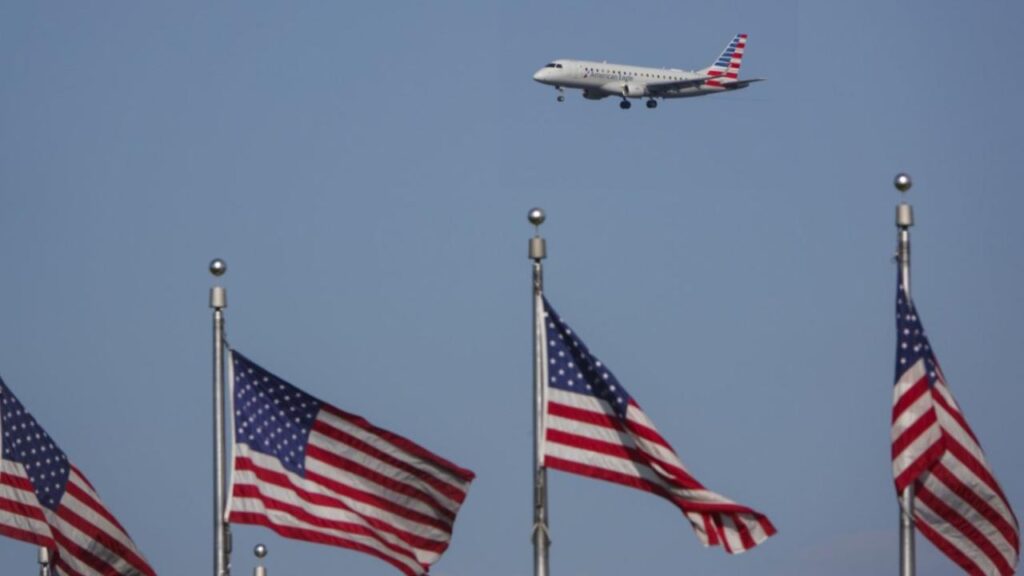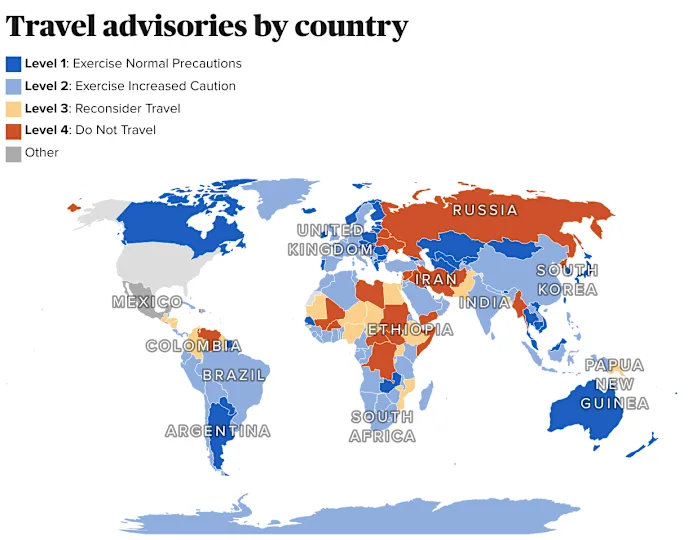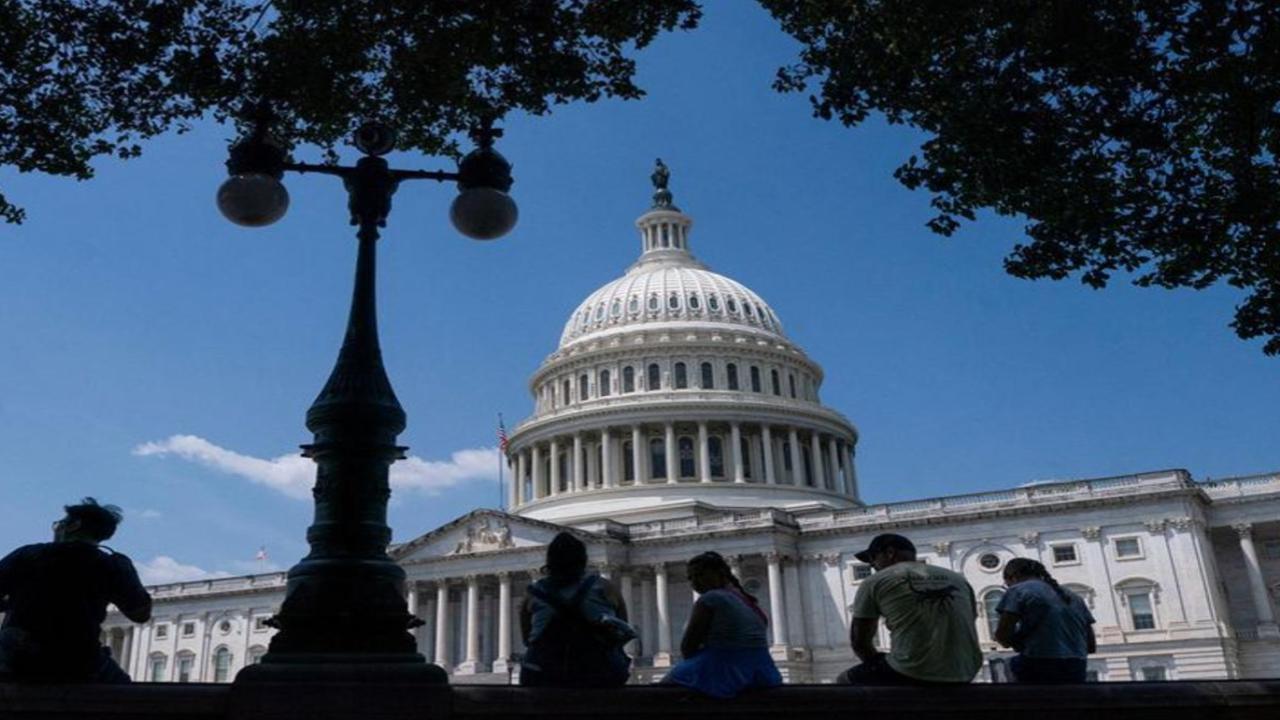Thinking of going international this summer? You might want to check your itinerary twice. The U.S. State Department has updated its Level 4 “Do Not Travel” advisories for 2025, urging Americans to steer clear of six particularly dangerous destinations. From armed conflicts and terrorism to kidnappings and collapsing infrastructure, here’s what you need to know to stay safe.

Americans Urged to Avoid These 6 Dangerous Destinations This Summer
| Destination Group | Key Risks |
|---|---|
| Afghanistan, Syria, Yemen | War zones, terrorism, kidnapping, no embassy support |
| Iran, North Korea | Arbitrary arrests, diplomatic tension, civil unrest |
| Sudan, Somalia, DRC | Civil war, violent crime, lack of medical care |
| Venezuela, Haiti | Gangs, kidnappings, protests, collapsing infrastructure |
| Russia, Belarus, Mali | Military conflicts, political repression, terrorism |
| Mexico (certain states), Trinidad & Tobago | Cartel violence, kidnappings, dating app crimes |
Travel is supposed to open doors, not put you in harm’s way. This summer, trust the experts. Avoid these six high-risk regions, explore safer alternatives, and prepare for every trip like it could take a turn. You’ll travel smarter—and safer.
What “Do Not Travel” Really Means
A Level 4 travel advisory is the U.S. government’s most severe warning. It signals extreme danger—where help from U.S. embassies might be limited or non-existent. Some of these areas are in full-blown war, others have governments that openly detain U.S. citizens without due process.
“Level 4 doesn’t just mean ‘be careful’—it means the situation is so unstable, you might not be able to get out if something goes wrong,” said a former U.S. diplomat now advising global aid organizations.
The 6 Danger Zones Americans Should Avoid
1. Afghanistan & Syria
Both remain mired in armed conflict. Bombings, kidnappings, and extremist violence are widespread. The U.S. Embassy in Kabul suspended operations in 2021—and hasn’t reopened. Syria is even worse, with overlapping wars and no American consular presence. “You are a target, not a tourist,” a security contractor told us about travel to Syria.
2. Yemen & Somalia
Ongoing civil wars make both countries no-go zones. Infrastructure is so battered, travelers may struggle to find clean water, let alone a hospital.
3. Iran & North Korea
These regimes have a pattern of detaining Americans. Dual citizens are especially at risk. In Iran, travelers have been arrested and held for months without charges. North Korea has banned most foreign visitors and continues missile tests.
4. Venezuela & Haiti
Gang violence and civil unrest have reached alarming levels. In Haiti, even aid groups are pulling out. In Venezuela, kidnappings are common and medical care is scarce due to economic collapse.
5. Iraq & Lebanon
While not technically war zones, both countries face routine violent protests, terrorist threats, and unreliable healthcare. American travelers have been detained or caught in crossfire during riots.
6. Mexico (Select States) & Trinidad & Tobago
The U.S. isn’t telling you to skip Mexico altogether—but states like Sinaloa, Tamaulipas, and Zacatecas are rife with cartel activity. In Trinidad, the issue is kidnappings tied to dating apps and gang violence in cities like Port of Spain.
U.S. Embassy Alert: “Don’t meet strangers from dating apps in public without precautions. Several recent cases involved tourists being kidnapped and held for ransom.”

So, Where Can You Go?
If your heart is set on international travel, plenty of safer destinations still exist. Most of Europe, parts of Southeast Asia (like Thailand and Japan), and South America’s Chile and Uruguay currently carry Level 1 or 2 advisories. As someone who’s backpacked through conflict zones in the past, I can tell you this: the best trips are ones where you come back with stories—not scars.
Smart Traveler Checklist
Register with STEP: The Smart Traveler Enrollment Program gives you embassy alerts in real time.
Buy Insurance: Especially policies that include emergency evacuation.
Use Embassy Tools: Bookmark travel.state.gov and follow country-specific alerts.
Be Discreet Online: Don’t advertise your travel plans on social media in unstable regions.
Trust Your Gut: If a destination feels unsafe, it probably is.
Frequently Asked Questions
Can I still go to these Level 4 countries if I really want to?
Yes, legally—but you’re on your own. If detained or injured, the U.S. government has limited capacity to help.
Is all of Mexico dangerous?
No. Tourist areas like Cancun, Playa del Carmen, and Puerto Vallarta are much safer, though caution is still advised.
Is Europe a good option?
Yes. Most European countries are at Level 1 or 2, meaning low to moderate risk. Just be alert around major events.






